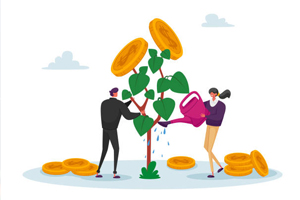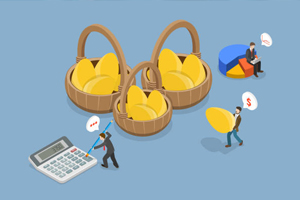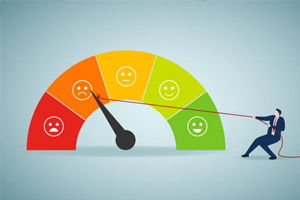Pros and cons of using credit cards for short-term loans
Explore the pros and cons of using credit cards for short-term loans Learn about hidden fees, impact on credit scores, and discover alternative financing options Make informed financial decisions with our comprehensive guide
Welcome to our comprehensive guide on using credit cards for short-term loans. In the dynamic landscape of personal finance, understanding the intricacies of credit card financing is essential for informed decision-making. This guide aims to provide you with a thorough exploration of the pros and cons associated with using credit cards for short-term financial needs.
As we delve into the advantages, such as convenience, accessibility, rewards, and the potential to build credit history, we'll also navigate the challenges, including high-interest rates, hidden fees, and the impact on your credit score. Each section is meticulously crafted to offer a comprehensive breakdown, ensuring you grasp the nuances of this financial tool.
Beyond credit cards, we explore alternative options like personal loans, payday loans, and peer-to-peer lending. Understanding the features, benefits, and considerations of these alternatives empowers you to make choices aligned with your unique financial goals and circumstances.
Whether you are a seasoned financial enthusiast or someone just embarking on their credit journey, this guide is designed to be a valuable resource. We've included frequently asked questions to address common queries, providing clarity on interest rate comparison, hidden fees, credit score impacts, and the advantages of alternative financing methods.
So, let's embark on this insightful journey together, exploring the intricacies of credit card loans and alternative financing options. By the end, you'll be equipped with the knowledge needed to make informed financial decisions, aligning your short-term goals with a robust understanding of the financial tools at your disposal.

Pros of Using Credit Cards for Short-Term Loans
Convenience and Accessibility
Convenience and accessibility are key advantages when using credit cards for short-term loans, providing a comprehensive breakdown of benefits that make them a popular choice for borrowers.
1. Online Transactions
One of the primary conveniences of credit card loans is the ability to conduct transactions online. Borrowers can conveniently apply for credit, receive approval, and manage their funds through online platforms, making the process swift and accessible.
2. 24/7 Availability
Credit cards offer round-the-clock availability, allowing borrowers to access funds at any time. This convenience is particularly valuable in emergency situations or for unexpected expenses, providing financial flexibility when needed the most.
3. Global Acceptance
Credit cards are widely accepted globally, providing accessibility for users to make purchases or withdraw cash in various locations. This international acceptance makes credit cards a versatile financial tool for travelers or individuals engaged in global transactions.
4. Instant Access to Credit
Unlike traditional loans that may involve a lengthy approval process, credit cards offer near-instant access to credit. This quick turnaround is advantageous for those who require immediate financial support, making credit cards a reliable option for short-term needs.
5. Ease of Repayment
Credit card repayments are often flexible, allowing borrowers to make minimum payments or pay the full balance. This flexibility enhances convenience for users, enabling them to manage repayments based on their financial circumstances and priorities.
6. Cashback and Rewards
Many credit cards come with cashback and rewards programs, providing additional benefits to users. This incentivizes individuals to use credit cards for various transactions, maximizing the advantages beyond just the convenience of accessing short-term credit.
7. Digital Wallet Integration
With the integration of credit cards into digital wallets, users can further enhance their convenience by managing their finances through mobile applications. Digital wallets offer features such as expense tracking, payment reminders, and security enhancements, contributing to a seamless user experience.
In summary, the convenience and accessibility offered by credit cards for short-term loans encompass online transactions, 24/7 availability, global acceptance, instant access to credit, ease of repayment, cashback and rewards, and digital wallet integration. These factors collectively contribute to making credit cards a convenient and accessible option for meeting short-term financial needs.
Rewards and Benefits
Rewards and benefits associated with credit cards for short-term loans provide a comprehensive breakdown of the additional value that borrowers can gain beyond the borrowed funds. Exploring these perks can help users make informed decisions when opting for credit card financing.
1. Cashback Programs
Credit cards often feature cashback programs where a percentage of the amount spent is returned to the cardholder. This incentivizes spending and provides a tangible financial benefit, especially for those who regularly use credit cards for various transactions.
2. Travel Rewards
Many credit cards offer travel rewards, including airline miles, hotel discounts, and travel insurance. For individuals who frequently travel, these perks can significantly offset expenses, making credit cards a strategic choice for both short-term loans and travel-related spending.
3. Points and Loyalty Programs
Credit cards may have points or loyalty programs tied to specific retailers, allowing cardholders to accumulate points with every purchase. These points can then be redeemed for discounts, products, or services, enhancing the overall value of using credit cards for short-term financing.
4. Introductory Interest Rates
Some credit cards offer low or zero-interest rates for an introductory period. This benefit can be particularly advantageous for short-term loans, as borrowers may have the opportunity to minimize interest payments during the initial months of card usage.
5. Purchase Protections
Credit cards often provide purchase protections such as extended warranties, price protection, and coverage against damaged or stolen items. These additional benefits enhance the overall value proposition for users, adding a layer of security to their transactions.
6. Concierge Services
Certain premium credit cards offer concierge services that assist cardholders with various tasks, including travel bookings, event reservations, and personalized assistance. This high-end benefit caters to individuals seeking a more exclusive and tailored experience.
7. Balance Transfer Options
For individuals with existing high-interest debt, credit cards may offer balance transfer options with low or zero-interest rates. This feature can be beneficial for consolidating debt and managing repayments more effectively.
In conclusion, the rewards and benefits associated with credit cards for short-term loans include cashback programs, travel rewards, points and loyalty programs, introductory interest rates, purchase protections, concierge services, and balance transfer options. These perks go beyond the immediate loan aspect, providing users with additional value and financial advantages.
Builds Credit History
The aspect of building credit history through the use of credit cards for short-term loans is crucial for individuals aiming to establish and strengthen their financial standing. A comprehensive breakdown of this benefit explores how credit cards contribute to a positive credit history and overall financial health.
1. Establishing a Credit Profile
Using credit cards responsibly allows individuals to initiate their credit journey by establishing a credit profile. This is particularly beneficial for those who are new to credit or have limited credit history, providing them with a foundation for future financial activities.
2. On-Time Payments Impact
Making on-time payments on credit card loans is a key factor in building a positive credit history. Timely repayments demonstrate financial responsibility to credit reporting agencies, positively influencing credit scores and enhancing creditworthiness over time.
3. Diversification of Credit Types
Holding and managing credit card accounts diversifies an individual's credit portfolio. This diversity, when combined with other types of credit (such as installment loans or mortgages), contributes to a well-rounded credit history, which can be viewed favorably by lenders and creditors.
4. Credit Utilization Ratio
Responsible use of credit cards involves maintaining a healthy credit utilization ratio — the proportion of available credit that is utilized. Keeping this ratio low demonstrates financial discipline and positively influences credit scores, facilitating a positive credit history.
5. Length of Credit History
The duration for which credit card accounts are held impacts the length of an individual's credit history. A longer credit history generally reflects stability and consistency in financial behavior, which can be advantageous for obtaining favorable loan terms in the future.
6. Credit Limit Increases
Responsible credit card usage may lead to credit limit increases over time. This not only provides users with greater financial flexibility but also positively affects the credit utilization ratio, contributing to the overall positive trajectory of their credit history.
7. Monitoring Credit Reports
Regularly monitoring credit reports is essential for individuals aiming to build and maintain a positive credit history. This allows users to identify and rectify any inaccuracies, ensuring that their credit history accurately reflects their financial behavior.
In summary, building credit history through credit cards involves establishing a credit profile, making on-time payments, diversifying credit types, managing the credit utilization ratio, considering the length of credit history, benefiting from credit limit increases, and actively monitoring credit reports. These elements collectively contribute to the development of a robust credit history and improved financial standing.
Cons of Using Credit Cards for Short-Term Loans
High-Interest Rates
High-interest rates associated with credit card loans are a significant consideration for borrowers. A comprehensive breakdown of this aspect explores the factors contributing to high-interest rates and the potential financial implications for users.
1. Variable Interest Rates
Credit card interest rates are often variable, meaning they can fluctuate based on market conditions or other factors. This variability can result in unpredictable monthly payments, making it crucial for borrowers to be aware of potential rate changes and plan accordingly.
2. APR (Annual Percentage Rate)
The APR represents the total cost of borrowing on an annual basis, including interest and certain fees. Credit card APRs are typically higher than those of other loan types, contributing to the overall expense of using credit cards for short-term financing.
3. Penalty APRs and Fees
Borrowers may incur penalty APRs and fees for late payments or exceeding credit limits. Understanding these penalty charges is essential, as they can significantly increase the overall cost of the loan and impact the borrower's financial stability.
Hidden Fees
Hidden fees associated with credit card loans can catch borrowers off guard, impacting the overall cost of borrowing. A comprehensive breakdown of hidden fees sheds light on potential charges that users may not be immediately aware of.
1. Annual Fees
Some credit cards come with annual fees, which are recurring charges for the privilege of using the card. It's important for borrowers to be aware of these fees and assess whether the benefits of the card outweigh the annual cost.
2. Balance Transfer Fees
When transferring balances from one credit card to another, borrowers may incur balance transfer fees. Understanding these fees is crucial, as they can offset potential savings from consolidating high-interest debt.
3. Foreign Transaction Fees
For individuals using credit cards internationally, foreign transaction fees may apply. These fees, often a percentage of the transaction amount, can add up and impact the overall cost of using credit cards for short-term loans.
Impact on Credit Score
The impact of credit card loans on credit scores is a critical consideration for borrowers. A comprehensive breakdown explores how credit card usage, both positive and negative, can influence an individual's creditworthiness.
1. On-Time Payments and Positive Impact
Making on-time payments on credit card loans positively influences credit scores. Timely repayments demonstrate financial responsibility and contribute to building a positive credit history, enhancing overall creditworthiness.
2. High Credit Card Balances and Negative Impact
Carrying high balances on credit cards, especially close to the credit limit, can negatively impact credit scores. This is reflected in the credit utilization ratio, and lenders may view high balances as a potential risk.
3. Credit Inquiries and Temporary Impact
Applying for new credit cards may result in hard inquiries on credit reports, temporarily impacting credit scores. While the impact is usually minor and short-lived, users should be mindful of the frequency of credit inquiries.
In summary, high-interest rates on credit card loans involve considerations such as variable interest rates, APR, and penalty fees. Hidden fees encompass annual fees, balance transfer fees, and foreign transaction fees. The impact on credit scores is influenced by factors such as on-time payments, credit card balances, and credit inquiries. Understanding these aspects is crucial for borrowers to make informed decisions about using credit cards for short-term loans.
Considerations Before Opting for Credit Card Loans
Interest Rate Comparison
Comparing interest rates is a crucial step for individuals considering credit card loans for short-term financing. A comprehensive breakdown of this aspect delves into the factors influencing interest rates and provides insights into effective interest rate comparison.
1. Standard Interest Rates
Credit cards typically come with standard interest rates, which can vary widely among different issuers and card types. Understanding the baseline interest rate is essential for borrowers to assess the overall cost of borrowing and make informed comparisons.
2. Introductory Interest Rates
Some credit cards offer introductory interest rates that are lower than the standard rates for a specified period. While these can be attractive, borrowers need to be aware of the duration of the introductory period and the subsequent adjustment to standard rates.
3. Variable Interest Rates
Variable interest rates are subject to change based on market conditions. Borrowers should be mindful of the potential for fluctuations in interest rates, as this can impact the affordability of credit card loans over time.
Understanding Terms and Conditions
Thoroughly understanding the terms and conditions associated with credit card loans is essential for responsible borrowing. A comprehensive breakdown of terms and conditions sheds light on key aspects that borrowers should consider before committing to credit card financing.
1. Grace Periods and Due Dates
Knowing the grace period for interest-free repayment and the due dates for payments is crucial. This information helps borrowers avoid late fees and interest charges, contributing to overall cost-effectiveness.
2. Penalty Fees and Charges
Examining the terms related to penalty fees for late payments, exceeding credit limits, or other violations is vital. Understanding these penalties allows borrowers to plan and manage their credit card usage responsibly.
3. Rewards and Incentives
The terms related to rewards programs, cashback, or other incentives should be carefully reviewed. This ensures that borrowers are aware of the potential benefits and any conditions attached to earning and redeeming rewards.
Assessing Financial Capability
Assessing one's financial capability is a crucial step before opting for credit card loans. A comprehensive breakdown explores the factors that individuals should consider when evaluating their ability to responsibly manage credit card financing.
1. Income and Expenses Analysis
Understanding one's income and expenses is fundamental to determining whether credit card payments can be comfortably accommodated within the budget. This analysis helps prevent financial strain and potential debt accumulation.
2. Emergency Fund Consideration
Having an emergency fund is important for unexpected expenses. Assessing the adequacy of the emergency fund helps individuals determine their resilience in handling unforeseen financial challenges without relying solely on credit cards.
3. Long-Term Financial Goals
Considering long-term financial goals is crucial. Borrowers should assess whether using credit card loans aligns with their broader financial objectives and whether it complements, rather than hinders, their overall financial plan.
In conclusion, interest rate comparison involves evaluating standard rates, introductory rates, and variable rates. Understanding terms and conditions includes considerations of grace periods, penalty fees, and rewards programs. Assessing financial capability encompasses income and expenses analysis, emergency fund consideration, and alignment with long-term financial goals. This comprehensive breakdown empowers borrowers to make informed decisions about utilizing credit card loans for short-term financing.
Personal Loans
Considering alternatives to credit card loans, personal loans provide a versatile option for individuals seeking short-term financing. A comprehensive breakdown of personal loans explores the features, advantages, and considerations associated with this alternative.
1. Fixed Interest Rates
Personal loans often come with fixed interest rates, providing borrowers with predictability in monthly payments. This stability can be advantageous for budgeting, as it eliminates the uncertainty associated with variable interest rates.
2. Installment Repayment Plans
Personal loans typically involve installment repayment plans, allowing borrowers to repay the borrowed amount in fixed monthly installments over a predetermined period. This structured approach simplifies financial planning and management.
3. Higher Loan Amounts
Compared to credit card limits, personal loans may offer higher loan amounts. This can be beneficial for individuals requiring a substantial sum for specific expenses, such as home repairs or debt consolidation.
4. Longer Loan Terms
Personal loans often have longer loan terms than credit card repayment periods. While this extends the duration of the debt, it can result in more manageable monthly payments, depending on the borrower's financial circumstances.
Payday Loans
Payday loans represent a specific form of short-term financing characterized by quick approval and fast access to funds. A comprehensive breakdown of payday loans explores the unique features, potential drawbacks, and considerations associated with this borrowing option.
1. High-Interest Rates
Payday loans are known for their high-interest rates, making them a relatively expensive form of short-term financing. Borrowers should carefully assess the total cost of the loan before opting for this option.
2. Short Repayment Periods
Payday loans typically require repayment within a short period, often aligned with the borrower's next paycheck. This short-term nature can lead to challenges for individuals who may struggle to repay the full amount by the due date.
3. Quick Approval and Disbursement
One of the advantages of payday loans is the quick approval process and rapid disbursement of funds. This feature makes payday loans suitable for urgent financial needs but requires careful consideration of the associated costs.
Peer-to-Peer Lending
Peer-to-peer (P2P) lending platforms connect borrowers directly with individual lenders, offering an alternative avenue for short-term financing. A comprehensive breakdown of P2P lending explores the collaborative nature, benefits, and considerations associated with this borrowing model.
1. Diverse Lending Options
P2P lending platforms provide borrowers with diverse lending options, allowing them to choose the terms, interest rates, and loan amounts that best suit their financial needs. This flexibility enhances the borrower's control over their financing arrangements.
2. Competitive Interest Rates
Competition among individual lenders on P2P platforms can lead to competitive interest rates. Borrowers may benefit from favorable terms, especially if their credit history is strong and they present a compelling loan proposal.
3. Streamlined Online Application Process
P2P lending typically involves a streamlined online application process. Borrowers can submit loan requests, and if approved, receive funding quickly. This digital approach adds convenience to the borrowing experience.
In summary, personal loans offer fixed interest rates, installment repayment plans, higher loan amounts, and longer loan terms. Payday loans feature high-interest rates, short repayment periods, and quick approval processes. Peer-to-peer lending provides diverse lending options, competitive interest rates, and a streamlined online application process. Understanding these alternatives enables borrowers to make informed decisions based on their unique financial situations and needs.
FAQs about Using Credit Cards for Short-Term Loans
Q1: What factors should I consider when comparing interest rates on credit card loans?
A1: When comparing interest rates on credit card loans, it's crucial to consider standard rates, introductory rates, and the potential for variable rates. Understanding these factors enables borrowers to make informed decisions about the overall cost of borrowing.
Q2: What are the hidden fees associated with credit card loans, and how can I avoid them?
A2: Hidden fees include annual fees, balance transfer fees, and foreign transaction fees. To avoid these charges, borrowers should carefully review the terms and conditions of their credit cards, understanding the implications of these fees and assessing whether the benefits outweigh the costs.
Q3: How do credit card loans impact my credit score, and what steps can I take to maintain a positive credit history?
A3: Credit card loans impact credit scores through factors like on-time payments and credit utilization ratios. Making timely payments and keeping credit card balances manageable are key. Regularly monitoring credit reports allows borrowers to ensure accuracy and rectify any discrepancies that may affect their credit history.
Q4: In what situations are personal loans more advantageous than credit card loans?
A4: Personal loans may be more advantageous than credit card loans when borrowers require higher loan amounts, fixed interest rates, and longer repayment terms. Personal loans provide a structured repayment plan, making them suitable for specific expenses or consolidating debt.
Q5: How does the quick approval process of payday loans compare to other short-term financing options?
A5: Payday loans offer a quick approval process and rapid fund disbursement, making them suitable for urgent financial needs. However, borrowers should be cautious due to their high-interest rates and short repayment periods. Comparing the speed of approval with the overall cost is essential in evaluating the suitability of payday loans.




























